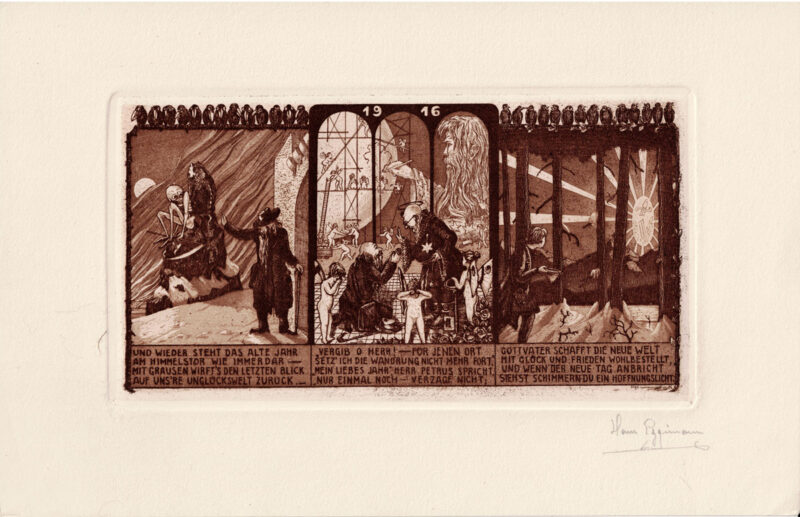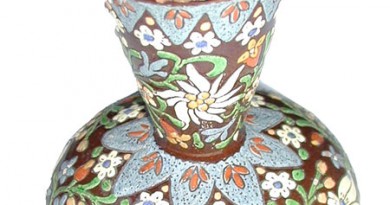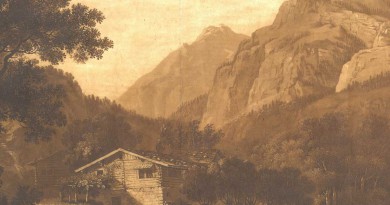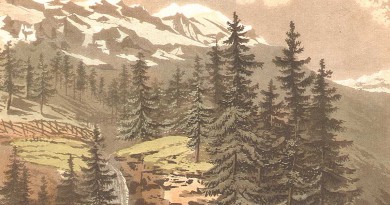New Years Design 1916 – Engraving by Hans Eggimann (SOLD)
New Years sheet design created by the artist in 1916 as a kind of triptich for the end of another dark year during WWI. In the image, a personification of the old year begs St. Peter not to make him go on. But Peter promises that God will make a new world with light, peace and hope.
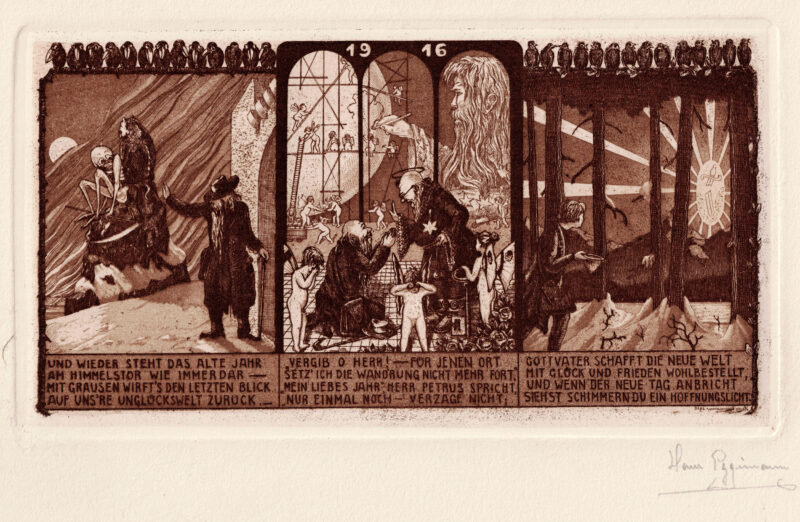
The text under the first image reads:
And once again the old year stands at heavens gate, as always there, and with horror takes a last look back at our unhappy world….
“Und wieder steht das alte Jahr auf Himmelstor wie immerdar, mit graussen wirft’s den letzten Blick auf un’sr unglueckswelt zuruck..”
Under the Middle Image: [The old year speaking to St. Peter] “Forgive me, Sir, but I cannot go back to that place. My dear year, said Peter, just one more time, do not give up!”
“Vergib O Herr! – Fuer jenen Ort setz ich die Wanderung nicht mehr fort” “Mein Liebes Jahr” Herr Petrus Spricht, “Nur einmal noch – verzage nicht.”
Under the final image: “God the father will make the world anew with joy and peace, and when the new day dawns, you will see the shining light of hope.”
“Gottvater schafft die neue welt mit glueck und frieden wohlbestellt.. und wenn der neue Tag anbricht, siehst shimmern du ein Hoffnungslicht”
Dimensions: Platemark 11.5 x 21 cm
Sheet: 18 x 28 cm
Signed by hand by the artist.
SOLD
September 29, 1872 (Bern) - May 29, 1929 (Bern)
Hans Eggimann Bernese painter, illustrator, engraver, works of satire and political commentary. Fantasies and fairy tales. Listed in the Benezit. Hans Eggimann was one of two sons of a Bernese couple who ran the Restaurant Hotel zur Pfistern near the Zeitglocken in the center of the Swiss capital. While his brother Fritz followed in the parents footsteps in the hotel instustry (he became a manager of the famous Bellevue Palace Hotel in Bern) Hans studied music, architecture and painting at the technical university of Dresden and later at the Ecole des Beaux-Arts in Paris. Eggimann was a cofounder of the monthly Bernese newsletter the “Baerenspiegel” to which he regularly submitted illustrations and later opened a bureau for art and architecture on the Montbijoustrasse.
One year later Albert Welti and Wilhelm Balmer moved to Bern to work on the grand mural for the Swiss Federal Council chamber. These two artists and their milieu were to have a profound impact on Eggimann’s work. Welti and Eggimann became close friends and Eggimann studied engraving with Welti. Both artists had a fascination with the fantastic, shown in the central motifs of their work as well as in the tiny imaginary creatures that sometimes populate the edges of their engravings. Jugendstil is also very evident in his work, particularly his illustrations, miniatures and ex libris.
But during the late 1920s, the artist began to suffer depression, and on May 29, 1929 he committed suicide by throwing himself off Bern’s Kirchenfeld bridge.
